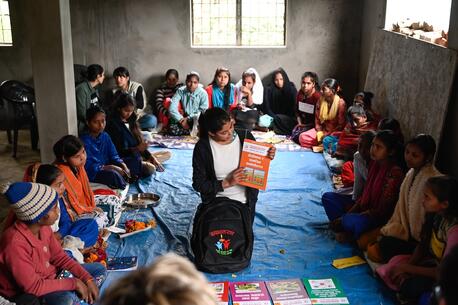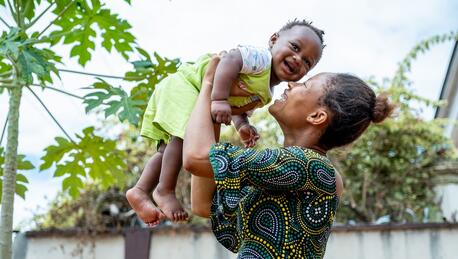The road to Kalafo
Malene Jensen is a UNICEF Communications Specialist on mission in Ethiopia.
The road from Gode to Kalafo, a town near the border with Somalia, is essentially a fresh pair of tire tracks in the desert that snakes past painfully skinny cattle, camels and dust covered villages. It's a hostile environment on the best of days, but severe drought has left it frightfully obvious that the people of the desert are in dire need of the rain they are hoping for in October.
The first stop we make is in Dabakatur. We have come to this small village to visit one of the Somali region's 24 UNICEF supported mobile health and nutrition units - essentially a health center on wheels that makes it possible to reach some of the most vulnerable communities in this pastoralist area.
Malene Jensen is a UNICEF Communications Specialist on mission in Ethiopia.
The road from Gode to Kalafo, a town near the border with Somalia, is essentially a fresh pair of tire tracks in the desert that snakes past painfully skinny cattle, camels and dust covered villages. It's a hostile environment on the best of days, but severe drought has left it frightfully obvious that the people of the desert are in dire need of the rain they are hoping for in October.
The first stop we make is in Dabakatur. We have come to this small village to visit one of the Somali region's 24 UNICEF supported mobile health and nutrition units - essentially a health center on wheels that makes it possible to reach some of the most vulnerable communities in this pastoralist area.
 Huddled in a nearby hut, we meet the community elders who tell us that the mobile health teams are making a positive change in the community. But again, the same worry is heard that if rain does not arrive in October things could drastically turn from bad to worse. This community depends on farming to feed their families, but without rain crops have failed. The cattle too is thinning out, it is not only the water that is waning, but also pasture.
A one and half hour drive from Dabakatur, we reach the city of Kalafo. Men, women and children are in the streets and the market is full of life. But food is sparse and there is no doubt that the people of Kalafo are struggling as well.
At the health center we are told that more pregnant women are arriving here weak and anaemic. They are also seeing more children this year than last, many of whom are malnourished. UNICEF along with NGOs are providing support to the health center, both in terms of vaccinations and fortified therapeutic foods. In recent years, the government has put in place a health extension program with the support of UNICEF and others partners, and the services provided at Kalafo health center and through the mobile health teams are all part of that.
But the system is stretched, and what the drive from Gode to Kalafo reminds us of not only the resilience of the people here, but also the need to continue to ensure that aid can reach the women and children of this drought impacted region.
Learn how you can support UNICEF's efforts in the Horn of Africa.
Huddled in a nearby hut, we meet the community elders who tell us that the mobile health teams are making a positive change in the community. But again, the same worry is heard that if rain does not arrive in October things could drastically turn from bad to worse. This community depends on farming to feed their families, but without rain crops have failed. The cattle too is thinning out, it is not only the water that is waning, but also pasture.
A one and half hour drive from Dabakatur, we reach the city of Kalafo. Men, women and children are in the streets and the market is full of life. But food is sparse and there is no doubt that the people of Kalafo are struggling as well.
At the health center we are told that more pregnant women are arriving here weak and anaemic. They are also seeing more children this year than last, many of whom are malnourished. UNICEF along with NGOs are providing support to the health center, both in terms of vaccinations and fortified therapeutic foods. In recent years, the government has put in place a health extension program with the support of UNICEF and others partners, and the services provided at Kalafo health center and through the mobile health teams are all part of that.
But the system is stretched, and what the drive from Gode to Kalafo reminds us of not only the resilience of the people here, but also the need to continue to ensure that aid can reach the women and children of this drought impacted region.
Learn how you can support UNICEF's efforts in the Horn of Africa.

© UNICEF| Cattle that can be seen roadside on the way to Kalafo.

